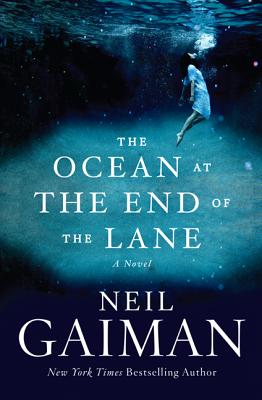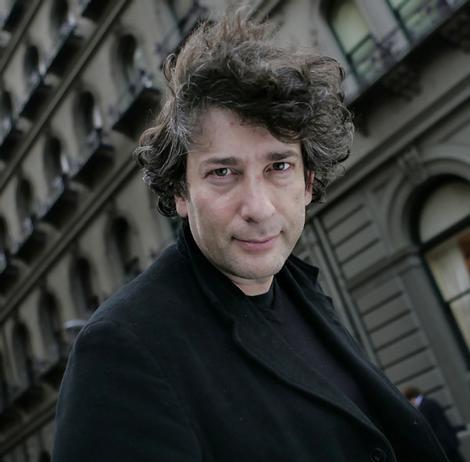by Neil Gaiman
I’m not going to tell you much about the plot of Neil Gaiman’s latest, The Ocean at the End of the Lane. It’s a slender book, under 200 pages, and his first novel for adults in eight years. Here, however, is a short exchange that happens early in the tale:
She shrugged. “Once you’ve been around for a bit, you get to know stuff.”That exchange occurs between the unnamed seven-year-old narrator and his new friend, Lettie Hempstock. However, we first meet this narrator about 40 years later in the novel’s prologue. He’s returned to the rural English village of his youth to attend a funeral. After the service, he takes a drive and finds himself strolling down not only the lane of his childhood home, but down memory lane as well. And what this visit unearths are some long-suppressed memories of extraordinary events.
I kicked a stone. “By ‘a bit’ do you mean ‘a really long time’?”
She nodded.
“How old are you really?” I asked.
“Eleven.”
I thought for a bit. Then I asked, “How long have you been eleven for?”
She smiled at me.
Mr. Gaiman has been candid in admitting that the bookish protagonist of the tale is a stand-in for his younger self, and that the novel has autobiographical elements—though I think it will be clear that they are merely a jumping off point for the fantastic. And fantastic it is! In all senses of the word.
I read The Ocean at the End of the Lane on Father’s Day, which somehow felt appropriate. And I
read it travel-woozy and jet-lagged. Also good, I think. I was halfway into another world already. What I can tell you is this: I read the book in one sitting. I did not eat, drink, or take a bathroom break. I did not move. It’s possible I did not breathe. But I did get chills. The book opens with what I gather was a true incident from the author’s childhood, a tragedy that is the catalyst for all that is the come. And as the tale grew darker and darker, I began to truly fear for these characters Gaiman had brought to life and made me care about.
The story is a heady combination of fantasy, horror, nostalgia, and coming-of-age tale. Like all of Mr. Gaiman’s work, there is much subtext to be mined. One could discuss the fascinating Hempstock women at length—their mythic origins, the various legends and cultures from which they may have derived, and their relationship to other Hempstocks in the author’s catalog. Or, you could concentrate on how the author examines adulthood from a child’s perspective and childhood from an adult’s perspective. Or, you could identify the influences of numerous other writers on this work, and explore the importance of literature in our lives and the power of story within the tale. The narrator asks, “Why didn’t adults want to read about Narnia, about secret islands and smugglers and dangerous fairies?” (Some of us do, Neil, some of us do.) What I’m saying is, that while The Ocean at the End of the Lane may be short on page count, it’s quite long on substance.
The writing is evocative, eerie, and very, very good. Dialogue and dialect bring characters’ voices to life. (“Right, my proud beauties,” said Ginnie Hempstock, loudly.) The tale moves quickly. At that length, there is nothing superfluous. More than anything, Mr. Gaiman is a masterful story-teller. When he tells you, in the guise of a pre-adolescent old soul, that a duck pond is an ocean, well, you will believe it.


I've entered a couple of contests to win a free copy of this. I'm sure if I don't end up the winner, I'll be picking this one up. Nice review!
ReplyDelete